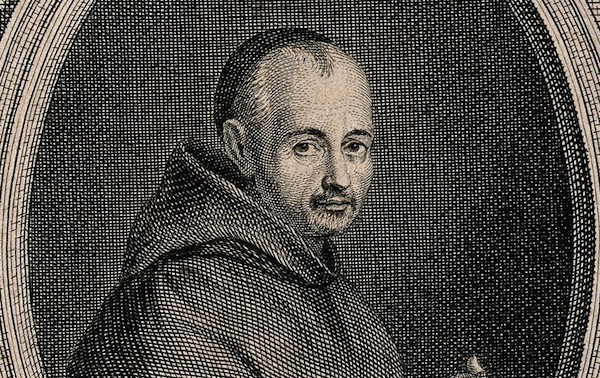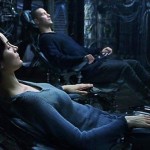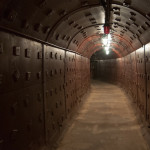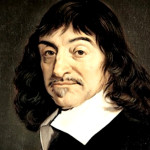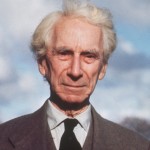Marin Mersenne: A Priest at the Heart of the Scientific Revolution
by Andrew Kassebaum
Filed under Christianity and Science
In late 1644, the Minim friar Marin Mersenne (1588-1648) travelled to Florence and assisted Evangelista Torricelli (1608-1647) in repeating his famous barometric experiment. When Mersenne returned to France, he shared Torricelli’s discovery with his network of correspondents, “giving rise to flourishing experimental and theoretical activities,”1 including the famous work on the weight of air conducted by Blaise Pascal (1623-1662). This is one of many contributions Mersenne would make to the scientific enterprise.
Called “an architect of the European scientific community”2 and “one of the most important figures in the history of modern thought,”3 Mersenne is virtually unknown to non-historians, although mathematicians may recognize his name from Mersenne Primes.4
Mersenne was one of the greatest facilitators and correspondents in the history of science, acting as a “clearing house for scientific and philosophical information in the decades just prior to the appearance of the first learned journals.”5 In 1635, Mersenne created the Académie Parisienne, a precursor to the Académie des Sciences.
One of Mersenne’s closest collaborators was Rene Descartes (1596-1650). Both men had attended the Jesuit College at La Flèche, although Descartes was several years younger. Later, Mersenne would assist in the publication of Descartes’ Discourse on Method, and, after Descartes relocated to the Dutch Republic, Mersenne would keep the Father of Modern Philosophy updated on French intellectual developments, while acting as “Descartes’ mouthpiece to the republic of letters.”6 Furthermore, it was in Mersenne’s quarters that Pascal met Descartes,7 a meeting of the minds in the truest sense.
In addition to Torricelli, Pascal, and Descartes, Mersenne’s friends and correspondents included the mathematicians Pierre de Fermat8 and Girard Desargues,9 philosopher Thomas Hobbes,10 and the churchman-astronomer Nicolas-Claude Fabri de Peiresc.11 In total, Mersenne corresponded with 140 key thinkers from throughout Europe (and as far away as Tunisia, Syria, and Constantinople),12 and his compiled correspondence now fills 12 volumes.
Mersenne, however, offers us much more. He made several other important contributions to the scientific enterprise, especially in the fields of acoustics, scientific methodology, telescope and pendulum theory, and in the study of the motion of falling objects.
Mersenne is often credited as one of the founders of acoustics. In this field, he pioneered “the scientific study of the upper and lower limits of audible frequencies, of harmonics, and of the measurement of the speed of sound,13 which he showed to be independent of pitch and loudness.” Furthermore, he “established that the intensity of sound, like that of light, is inversely proportional to the distance from its source.”14 His work in acoustics is immortalized in his eponymous three laws describing the relationship between frequency and the tension, weight, and length of strings.
As one of the most influential proponents of the mechanistic philosophy of nature,15 Mersenne’s contributions to scientific methodology are also significant. Mersenne, who was inspired by Francis Bacon,16 was an ardent defender of the rationality of nature, as well a strong opponent of magic and the occult.
His “insistence on the careful specification of experimental procedures, repetition of experiments, publication of the numerical results of actual measurements as distinct from those calculated from theory, and recognition of approximations marked a notable step in the organization of experimental science in the seventeenth century.”17 The Catholic Encyclopedia (a sympathetic voice, to be sure) goes as far as identifying the work of Mersenne and Galileo in experimenting with the weight of air as “the beginning of the development of the experimental method”18 (This experimentation was not his only connection to the great Italian scientist: Mersenne translated Galileo’s work on mechanics19 and helped to spread Galileo’s ideas in France).
In his work with pendulums, Mersenne discovered that “the frequency of a pendulum is inversely proportional to the square root of its length.”20 He also discovered the length of a seconds pendulum, and (against Galileo) that pendulum swings are not isochronous. Furthermore, Mersenne’s suggestion to Christiaan Huygens (1629-1695) that the pendulum could be used as a timing device partially inspired the pendulum clock.21
Mersenne did much more than contribute significantly to the scientific enterprise. He engaged and embraced the best ideas and minds of his time. In his century of genius, the power of the human mind reached new heights in its ability to understand the laws of nature. Against this backdrop, Mersenne championed the unity of truth.22
Encouraged by his order and always a loyal son of the Church,23 Mersenne was operating at the heart of the Scientific Revolution. And he demands the attention today of both Catholics and atheists.
Related Posts
Notes:
- “Torricelli, Evangelista.” Complete Dictionary of Scientific Biography. Vol. 13. Detroit: Charles Scribner’s Sons, 2008. 439. ↩
- “Mersenne, Marin.” Complete Dictionary of Scientific Biography. Vol. 9. Detroit: Charles Scribner’s Sons, 2008. 316. ↩
- Popkin, Richard H. The History of Scepticism from Erasmus to Descartes. Assen: Van Gorcum, 1960. 131. ↩
- In mathematics, Mersenne also made a study of the cycloid, worked with combinations and permutations in his music theory, and edited works of Greek mathematicians. ↩
- Collins, James. God in Modern Philosophy. Chicago: Henry Regnery, 1959. 51. ↩
- The Sun in the Church: Cathedrals as Solar Observatories. Cambridge, MA: Harvard University Press, 1999. 183. ↩
- Mersenne, DSB, 9, 316. ↩
- Fermat’s theorem on sums of two squares was announced in a letter to Mersenne. ↩
- See “Desargues, Girard.” Complete Dictionary of Scientific Biography. Vol. 4. Detroit: Charles Scribner’s Sons, 2008. 47. ↩
- “The Englishman, Thomas Hobbes, first began to develop his views on the physical universe after he made contact with Mersenne and his friends.” (Butterfield, Herbert. The Origins of Modern Science. New York: The Free Press, 1965. 83-84. ↩
- “Mersenne and Peiresc regularly exchanged letters, discussing news of books, experiments, observations, and the theories and opinions that were opening fresh perspectives on knowledge of the natural world.” (“Peiresc, Nicolas Claude Fabri De.” Complete Dictionary of Scientific Biography. Vol. 9. Detroit: Charles Scribner’s Sons, 2008. 489.) ↩
- Mersenne, DSB, 9, 316. ↩
- Mersenne and Pierre Gassendi “estimated the speed of sound as 1,038 feet per second, a passable approximation for the time.” (Gassendi, DSB, 5, 288) ↩
- Mersenne, DSB, 9, 319. ↩
- “In the circle around Mersenne in the 1630’s the idea of a complete mechanistic interpretation of the universe came out into the open, and its chief exponents were the most religious men in the group that we are discussing. They were anxious to prove the adequacy and the perfection of Creation—anxious to vindicate God’s rationality.” (Butterfield, 85) ↩
- Although an admirer, Mersenne reproached Bacon for not keeping up with the progress of the sciences (Mersenne, DSB, 9, 317) ↩
- Mersenne, DSB, 9, 318. ↩
- “History of Physics.” The Catholic Encyclopedia. Vol. 12. New York: Robert Appleton Company, 1911. ↩
- “Galilei, Galileo.” Complete Dictionary of Scientific Biography. Vol. 5. Detroit: Charles Scribner’s Sons, 2008. 239. ↩
- Mersenne, DSB, 9, 319. ↩
- Buckley, Michael J. At the Origins of Modern Atheism. New Haven: Yale University Press, 1987. 65. ↩
- Mersenne wrote that “the true philosophy never conflicts with the belief of the Church.” (Mersenne, DSB, 9, 317) ↩
- For example, Mersenne dedicated several works to prominent Churchmen. ↩
Note: Our goal is to cultivate serious and respectful dialogue. While it's OK to disagree—even encouraged!—any snarky, offensive, or off-topic comments will be deleted. Before commenting please read the Commenting Rules and Tips. If you're having trouble commenting, read the Commenting Instructions.




